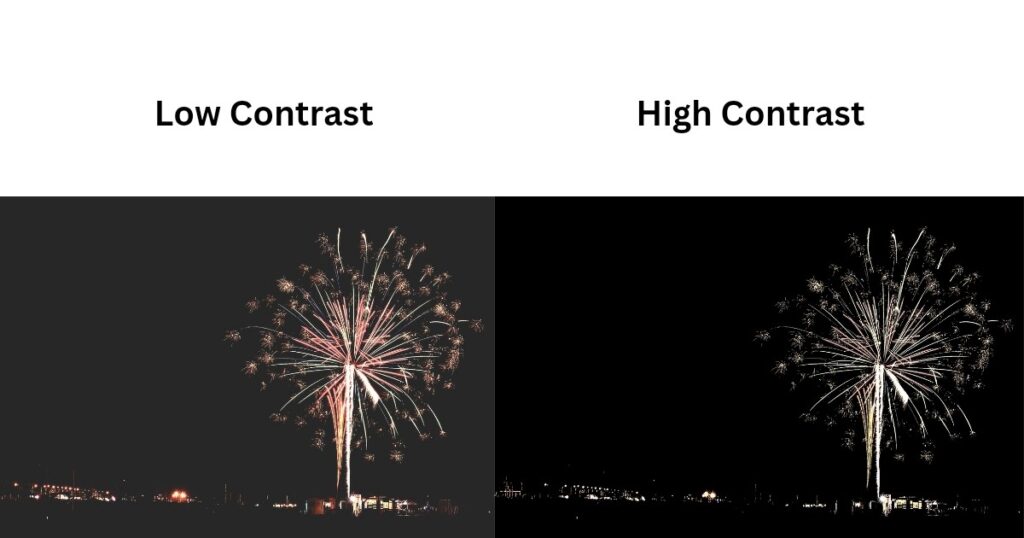
Trying to decide between a bright Mini LED TV with HDR10+ and an OLED TV with Dolby Vision?
Let’s compare them based on HDR performance. For that, we will be focussing on contrast ratio, peak brightness and color accuracy.
Contrast, brightness and colors
Speaking of peak brightness, Mini LED TVs can reach breathtaking levels of brightness, offering a wide range of luminance levels to enhance HDR content.
The very bright Mini LED TV is a top-of-the-line option that also brings nice contrast to the table thanks to its mini LED local dimming.
So, with a high peak brightness and nice contrast ratio, it’s a powerhouse in handling bright vibrant scenes.
On the other hand, the OLED TV boasts an infinite contrast ratio and true blacks, thanks to its ability to completely shut off pixels in dark scenes.
Color accuracy
Color accuracy is dependent on the color volume, which is influenced by both, the TV’s color gamut and its ability to achieve various luminance levels.
TVs with high peak brightness and wide color gamut deliver exceptional color accuracy, and that’s where the Mini LED TVs excel.
Now, let’s take three TVs coming at nearly the same budget: a Samsung Neo QLED TV, an LG QNED TV, and an LG OLED TV.
Let’s compare their HDR performance.
QLED vs QNED vs OLED
Both the Neo QLED and QNED TVs use mini LED backlighting, which allows for super high peak brightness.
They also achieve a wide color gamut, thanks to the quantum dot technology.
These TVs also boast an impressive contrast ratio due to precise local dimming.
On the other hand, OLED TVs might not reach the same peak brightness, perhaps due to the limited glowing ability of the organic self-lit pixels.
However, they offer unparalleled contrast with true blacks that are unmatched by any other TV.
And the winner is..
If we’re comparing at the same price point, the Samsung Neo QLED TV takes the crown for HDR performance.
It can reach extraordinary brightness levels, showcasing HDR content in all its glory.
With quantum dots and mini LED technology, it delivers amazing contrast and color volume, and therefore, the best HDR performance out there.
This TV is a real winner when it comes to HDR.
When it comes to the OLED TVs, they might not reach the same peak brightness in HDR as Neo QLED TVs, but offer outstanding contrast, putting them in the second position in terms of HDR performance.
Moving on to QNED TVs, they also use mini LED backlighting and quantum dots, just like Neo QLED TVs.
But, they have an additional layer of nanoparticles to filter impure colors. Due to this filter, they might not achieve the same peak brightness as Neo QLED TVs.
But, they still manage to deliver a wide color gamut and an impressive contrast ratio, although the contrast ratio is not on par with the OLED TVs.
This places them in the third position in HDR performance.
So, in the same price range, the order of HDR performance in these TVs might look like this:
- Samsung Neo QLED TV (Highest color volume)
- LG OLED TV (Best contrast)
- LG QNED TV (Wide color gamut)
What about the HDR formats?
Isn’t it interesting how we compared HDR performance without actually comparing different HDR formats? You might be wondering about this.
Samsung Mini LED TVs usually support HDR10 and HDR10+, while the LG OLED TVs and QNED TVs come with HDR10 and Dolby Vision support.
Both Dolby Vision and HDR10+ are advanced HDR formats that use dynamic metadata to optimize content scene-by-scene.
However, the TV’s HDR performance mostly hinges on its contrast ratio and color accuracy.
So, it’s more about the TV’s overall capabilities than the number and types of HDR formats it supports.
Which is better, a Mini LED TV with HDR10+ or an OLED TV with Dolby Vision?
If you want to experience ultimate contrast with exceptional black levels, go for an OLED TV.
If you have a bright living area, go for a Mini LED TV which can reach a high peak brightness to fight the glare of the sun.
In summary, buy an OLED TV if you are a dark room or a dimly lit room viewer. Otherwise, buy a Mini LED TV if you are a bright room viewer.


